16 Jul The rising risk of fumonisins in swine
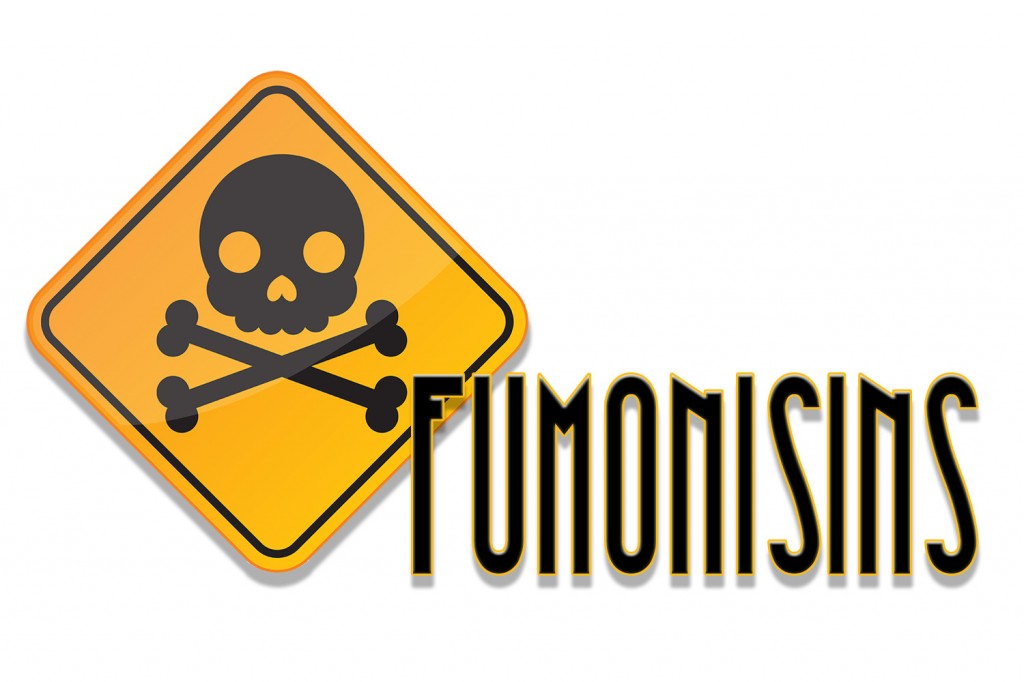
Contamination by fumonisins is increasing in swine feeds worldwide.
Fumonisins are a group of mycotoxins discovered in 1988 and produced primarily by Fusarium verticillioides and Fusarium proliferatum. There are at least 28 different forms of fumonisins, being fumonisin B1 the most common. The percentage of fumonisin-contaminated feedstuffs is rising in recent years, as climate change is causing extreme weather conditions that favor the growth of Fusarium verticillioides and Fusarium proliferatum. Fumonisins are the most frequently found mycotoxins in corn and they are spread worldwide.
In the Report on the Contamination by Mycotoxins of Feedstuffs that we published last year, 97% of the samples were contaminated with fumonisins (83% of pig feedstuffs) and 55% of the samples were above the safety límits recommended for each specie (50% of the pig feedstuffs).
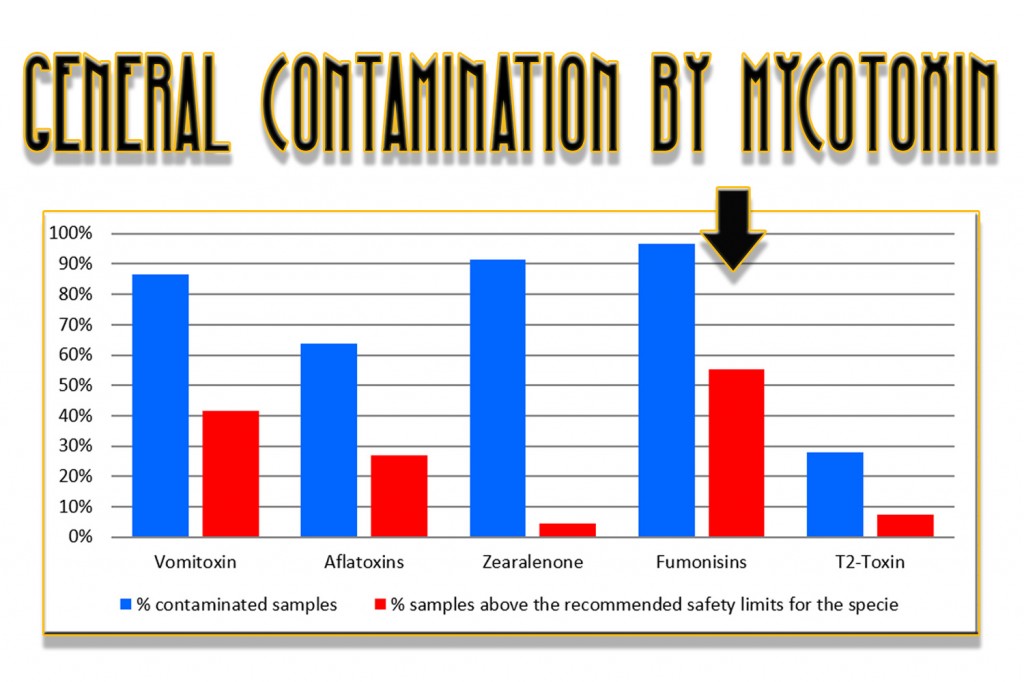
MODE OF ACTION OF FUMONISINS
Fumonisins interfere with the synthesis of sphingolipids. Sphingolipids are a class of lipids found in cell membranes, especially in tissues located in liver, lungs, heart, brain and nerves. The disruption of sphingolipid metabolism results in disturbances of cellular processes such as cell growth, differentiation, morphology, permeability and death.
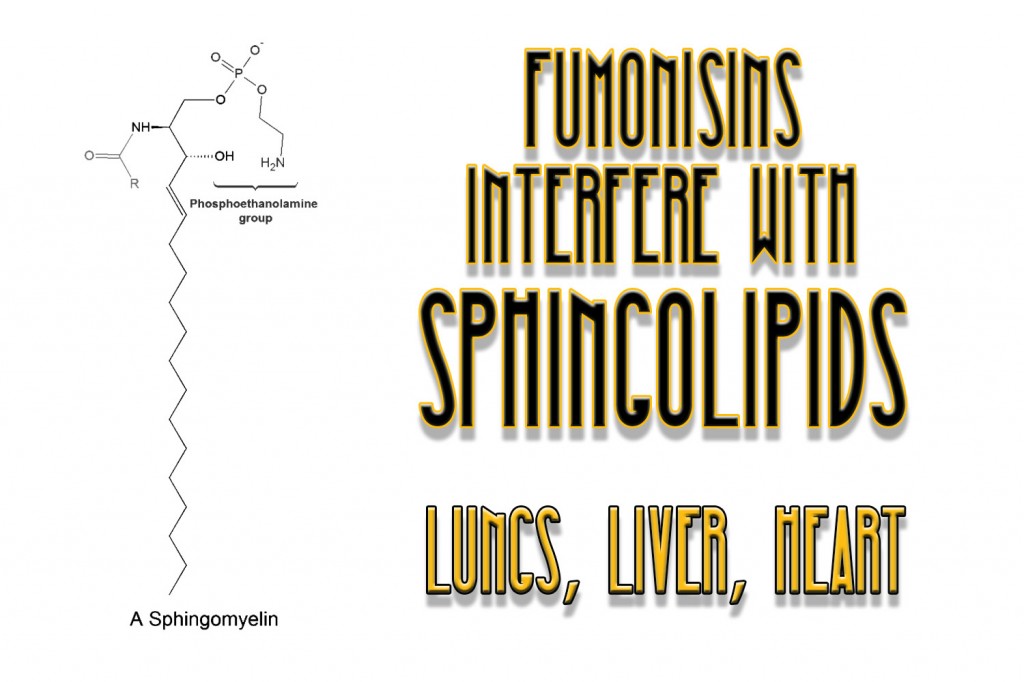
TOXICITY OF FUMONISINS IN PIGS
In swine, fumonisins are poorly absorbed in the digestive system (only 3-6%). Once they enter the bloodstream, they are widely distributed thorough the organs (e.g. liver, kidney, large intestine, lung, heart, and brain). and elimination is slow, so they remain in the pig for an extended period of time.
The acute effects of high contamination levels (above 10 ppm) of fumonisins are well-studied, being mainly Porcine Pulmonary Edema (PPE). In recent years, there is increasing research about the negative effects of prolonged exposure to low doses. It has been established that at levels above 1 ppm there is already a harmful impact on health or productivity, both for nursery and fattening pigs.
Toxicity in respiratory system
- Acute toxicity on respiratory system (≥10 ppm): the disease is known as Porcine Pulmonary Edema (PPE). Pigs show lethargy; dog-sitting posture, increased respiratory rates, decreased heart rate, vomiting, diarrhea and excessive open mouth breathing. Mortality in the affected animals is 50-90%.
- Exposure to low doses of fumonisins (≥1 ppm): Nursery pigs show changes in the structures of the lung tissues at concentrations as low as 1 ppm. Moreover, fumonisins interfere with the function of macrophages located in lungs, decreasing their ability to eliminate the pathogenic bacteria and foreign particles that arrive to the lower respiratory system by inhalation. Consumption of fumonisin-contaminated feed has been associated with a higher risk of respiratory diseases. Besides, it has been proven that fumonisins worsen the severity of the lung lesions caused by Mycoplasma hyopneumoniae.
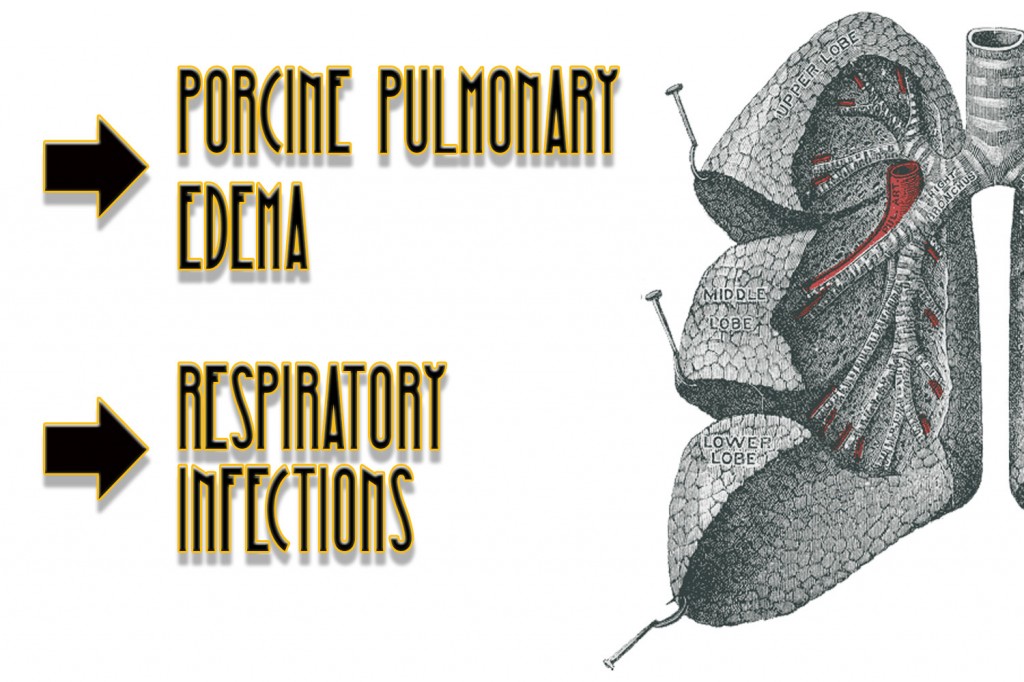
Toxicity in liver
Liver is the organ with the highest accumulation of fumonisins, followed by kidney. Hepatic injury is dose- and time-dependent and can be detected by elevated hepatic enzymes in blood. Changes in appearance of the liver can be seen at low doses of fumonisins (5 ppm), as it becomes yellowish and brittle.
Gastrointestinal effects
As explained above, more than 94% of the ingested fumonisins are not absorbed into blood and remain in the intestine. Latest research has shown that the negative effects of fumonisins in the digestive tract have different mechanisms of action:
- Imbalance of gut flora, favoring the proliferation of pathogens like Salmonella sp.
- Impairment of the local digestive immune response to pathogens.
- Increase of the intestinal colonization by pathogens like E.coli and breaking down of the intestinal barrier that prevents pathogens from entering the bloodstream. In pregnant and lactating sows this mechanism of action is especially important as the proliferation of E.coli in intestine is directly related to postpartum dysgalactia syndrome (PDS).
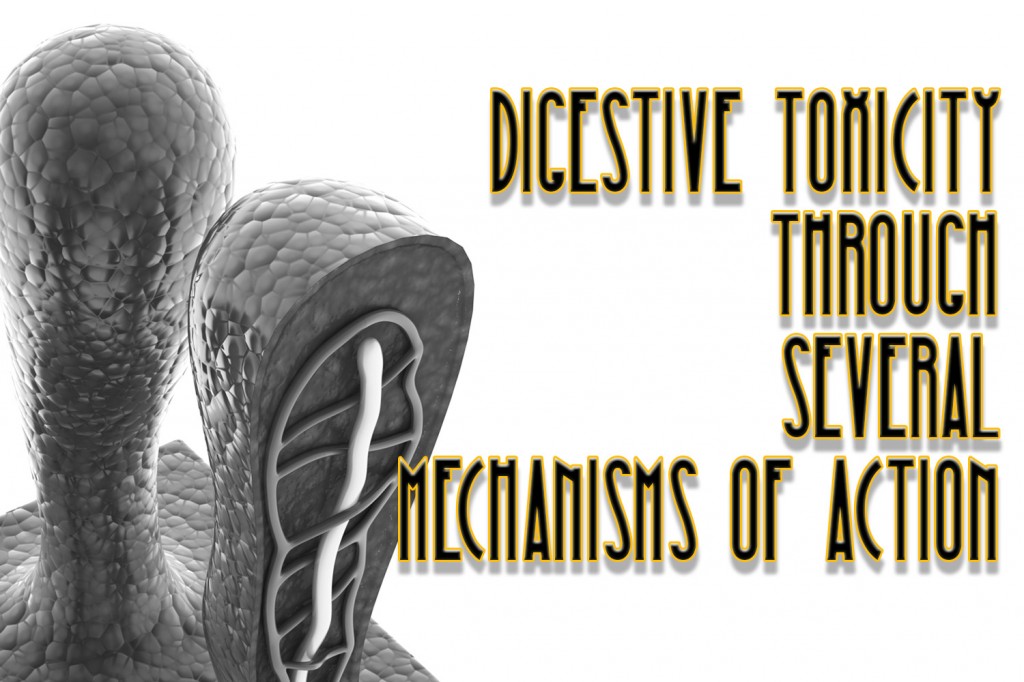
Productivity impairment
Productivity of fattening pigs is not affected by low and medium doses of fumonisins in feed. In nursery piglets, the presence of low doses (1 to 3 ppm) of fumonisins causes a decrease in average daily weight gain.
CONCLUSION
Contamination by fumonisins is increasing in swine feeds worldwide. It is necessary to understand the consequences of intoxication by fumonisins in order to protect the health of the pig herd and to take corrective measures, such as performing the right quality control on the raw materials and adding a mycotoxin binder to swine feeds.
Products of choice
PlusBind© is a mixture of carefully selected silicates intended for the prevention of diseases and productivity losses related to the presence of all types of mycotoxins. It is indicated in poultry, pigs, aquaculture and ruminants.
The silicates present in PlusBind© have a highly expandable molecular structure. This characteristic gives the product a wide surface available for the adsorption of mycotoxins and therefore allows a high effectiveness at lower doses (0.5-1 kg per ton of feed).
PlusBind Bio© is a mixture of carefully selected silicates intended for the prevention of diseases and productivity losses related to the presence of all types of mycotoxins. It also contains plant extracts with prebiotic effect.
It is indicated in poultry, pigs and aquaculture.
The silicates present in PlusBind Bio© have a highly expandable molecular structure. This characteristic gives the product a wide surface available for the adsorption of mycotoxins and therefore allows a high effectiveness at lower doses (0.5-1 kg per ton of feed).

Certain health statements may not be applicable in your region.

